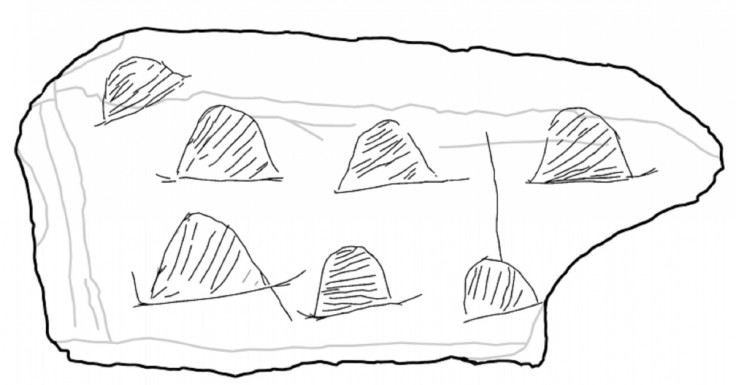World's oldest urban landscape? 13,800-year-old engraving depicts Stone Age hunter gatherer campsite
The world's first piece of landscape art may have been discovered in Spain, depicting what appears to be a Stone Age hunter-gatherer campsite 13,800 years ago. Landscapes and images of everyday life were "scarcely represented" in Paleolithic art, with those featuring huts and campsites particularly rare.
However, engravings found at the Molí del Salt (MS) site in Spain appear to show just that. Researchers from the University of the Basque Country and the Catalan Institute of Human Paleoecology and Social Evolution published their findings in the journal PLOS One.

Normally, engravings from this period show animals and signs linked to magic or religious conceptions, the team said. "This slab displays seven semi-circular motifs that may be interpreted as the representation of dome-shaped huts," they wrote. "The analysis of individual motifs and the composition, as well as the ethnographic and archaeological contextualisation, suggests that this engraving is a naturalistic depiction of a hunter-gatherer campsite."
The slab has seven engraved semi-circular motifs on with internal lines arranged in two rows. Analysis of motifs and composition together with archaeological records led authors to come to the conclusion it depicts a campsite.

Camps and huts were thought to be the first stage in the contraction of the human landscape. While documented dwellings are not common, some remnants of dwelling structures have been identified and these tend to exhibit circular or oval plans. The MS slab appears to show seven semi-circular huts, the researchers said.
"The MS engraving shows the possibility of interpreting some of the signs of Palaeolithic art as representations of tangible images from real perceptions," the team wrote, saying the engraving can be considered as a "frozen and photographic image" of a human landscape, offering a "different version of Palaeolithic art based on a social image".

"This engraving is one of the few examples of architecture and anthropic landscape art so far documented in Palaeolithic archaeology. Unlike other purported examples of landscape depictions, it mainly represents a human landscape, suggesting that the human world was the main concern of the artist. Given the social meaning of campsites in a hunter-gatherer organisation, it can be considered one of the first artistic representations of the domestic and social space of a human group."
© Copyright IBTimes 2025. All rights reserved.






















